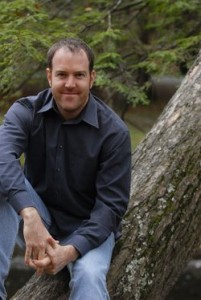Sheinkin, Steve
Telling the Story in History
The stories Steve Sheinkin explores are often either ones that had previously been relegated to textbook sidebars (Bomb, Port Chicago 50) or questions that seem to come straight from the mouths of modern students (King George: What Was His Problem?) “Textbooks don’t do a good job of dealing with moral ambiguities,” explains the former editor and writer for a textbook company. They also often leave the compelling story out of the history.
Take Daniel Ellsburg for example. This obscure government analyst risked everything to shine a light on the Vietnam War and the government’s deceptions. “What drew me to this story was this dynamic: Hero or villain? Famous or infamous?” Most Dangerous: Daniel Ellsburg and the Secret History of the Vietnam War reads like a thriller but also is a primer on how history is made and recorded. “Daniel Ellsburg was considered a hero for exposing the truth and a villain for leaking,” recounts Steve, continuing that “Nixon went over the edge, going extralegal to destroy Ellsburg and that led to Watergate. One man’s decision to shine a light on government misdeeds led to the collapse of a presidency.” Best of all for young readers, Ellsburg’s story reads like a “fast-paced thriller,” notes the author.
You might expect that it was the Snowden leaks that inspired Most Dangerous but you would be wrong. Sheinkin concedes the “fascinating parallels” but he began Ellsburg’s story long before Snowden’s revelations made headlines. The questions now echo those asked 25 years ago: “How much do we have a right to know as citizens?”
Sheinkin’s biggest hit has been Bomb: The Race to Build–and Steal–the World’s First Atomic Bomb. Yet Bomb did not start out as a history of the ultimate incendiary device–“It started with a spy I didn’t end up using who grew up in the Midwest and then was trained in Russia.” The promising story line ended abruptly when the trail grew cold at Oak Ridge. Yet that led directly to Oppenheimer and the story Sheinkin so memorably told in Bomb.
“I came across so many great scenes in primary sources,” explains Steve. The elegant design of the book and the smart use of the file photographs between the sections gave young readers the sense of discovering the story for themselves.
A much younger Sheinkin thought he hated history until he realized his favorite books, notably The Mutiny on the Bounty, were “great adventures stories based on true events.”
“I did not set out to write for younger readers,” confides the author. “I respect younger readers, and I sort out these complex stories and issues to make them accessible.” How does he do this? While writing and editing textbooks, he “felt they were terrible and I felt terrible doing them.” This led directly to another feeling–“that maybe I could take the same material and make it more fun to read and do it in a way that would be memorable.” Steve set out to tell the stories that they would not let him include in textbooks and infused them with a light, irreverent sense of humor.
He does credit his time in textbooks with one great advantage. “I have internalized the standards so I’m including things that are required. It takes a bit of extra work, but I’m meeting more and more teachers and librarians who are using the books in this way.” Ultimately, Steve Sheinkin tells us that he is “writing the book that I wanted to read.”
He also writes the book that needs to be read. Steve had never heard of the incident that he memorializes in Port Chicago 50. “It tangentially intersects with Bomb and there was a conspiracy theory that the explosion of Port Chicago was a nuclear test.” While that was not the case, the story did turn out to be a civil rights story that deserved a wider audience. “There was very little research except by Robert Allen, a professor at UC Berkeley who came across a reference to the event in the 70s,” Steve discovered.
Robert Allen came across it in the 70s and made it his mission to find out what happened and find the survivors. “It was an amazing piece of detective work,” acknowledges Steve. “This was 1973 and he relied on phone books and Greyhound bus tickets to track down these guys who had never told their story before.” Allen and Sheinkin have since become friends and the professor who yanked the story from oblivion has been very supportive of Steve’s YA book. “I considered what Robert did was so heroic. He just didn’t give up,” continues Steve. “He’s a hero of history.”
Steve Sheinkin is a hero of history as well. He has become a master of finding the stories that will fascinate young readers, inviting them to see another side of The Notorious Benedict Arnold and ask King George–What Was His Problem? for themselves.
Interviewed by Ellen Myrick, July 2015
Click here for titles available in the BTSB Bookstore from this author

